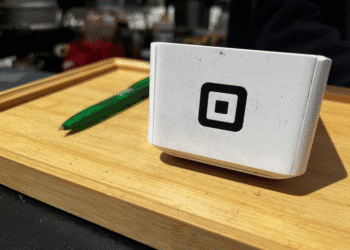Why Apple’s NFC snub might hurt the banks and networks more than ever?
I’ve always maintained that Near Field Communication (NFC) was attractive for both the banks acting as acquirers and issuers, and ultimately the networks themselves. Particularly in the US marketplace. Why? The only way to keep the Point-of-Sale (POS) terminal in a transaction as we shift to mobile wallet and mobile payments at merchants is for banks and networks to seamlessly transition cardholders from ‘swipe’ to tap. The longer the banks and networks take to convert to NFC-enabled transactions, the more likely it is that the POS terminal will no longer offer value at the merchant space as we drive to wallet driven payments as opposed to the swipe paradigm.
What did we do before credit and debit card networks? We paid with cash and cheques. This was an asynchronous process that relied purely on you having either cash in your wallet (or your chequebook) and a merchant (we called them store owners back then) who would accept your payment. We might sometimes forget that there was a time when cards were not accepted and the equipment to process a card transaction didn’t exist, or hadn’t been deployed. In the early days the clunky knuckle-busters were the height of technology, but over time the networks started to deploy electronic terminals to reduce fraud rates, and improve clearing times.
It took almost two decades for card payments to become globally ubiquitous, so it might be reasonable to think that a paradigm shift at the POS will take years to become mainstream. Why would you spend money deploying expensive NFC-enabled POS terminals unless consumers were going to use them, right?
In normal circumstances, if there were no competition, this would make good business sense. The problem for the banks and networks is that they think the ‘card’ is defensible – that this product has enough inertia for consumers to not be bothered by the fact that they can’t yet pay with their phone at every POS terminal. In the US, this inertia has not only meant a slow roll out for NFC, but has also seen US merchants slip 7-8 years behind their EU counterparts. In the EU already 75% of cards support the EMV standard, and more than 90% of terminals, whereas in the US only 30% of merchants support EMV. So we hear frequent stories of US travelers in Europe unable to pay for the simplest of purchases or transactions with long outdated card tech. Worse for the US card industry is that the industry is paying 3c of every transaction in preventable fraud right now due to outdated signature and mag-stripe tech.
So you might think that Apple’s NFC snub supports the theory that there’s simply no hurry. Maybe Apple are simply waiting for NFC to become mainstream before they jump in. That’s undoubtedly part of the reason, but I think there’s another explanation, which presents real problems for the incumbents.
Not-for-consumers?
NFC is sometimes referred to by skeptical industry pundits as Not-For-Consumers. But the technology is sound, has been around for more than a decade, and is a logical transition when you are trying to move consumers from a plastic ‘swipe’ to a phone-based ‘tap’.
Let me tell you why I think Apple baulked this time around with NFC. I think there are three main reasons, but has little to do with the consumer adoption angle:
- Firstly, the most obvious. Apple wants maximum utilization of their device and technology, and it’s likely true that they’re waiting for better US-based infrastructure (their home market and one of their largest) to support phone payments at the POS. Apple is not known generally at leading consumers with new technologies, they weren’t the first with an ‘MP3’ player, neither were they the first tablet manufacturer. Apple is known for their impeccable timing with new technologies, along with creating disruptive ecosystems to support those technologies (like iTunes).
- Secondly, they don’t control the ecosystem and they’re not keen on providing tech that banks and card networks make money on, but they don’t. While it is true Apple has such phenomenal market and brand power that they could move the market on this, why move the market so that banks and card networks continue to make interchange fee, and Apple makes nothing beyond the handset sale?
- Lastly, they’ve figured out that they just don’t need to support the existing POS technology to enable payments at all – so the longer banks and networks wait to deploy NFC ready merchant capability, the less likely it is that Apple will go for NFC all together. In fact, the lack of NFC industry adoption means Apple is choosing to pursue support for digital wallet solutions, taking the card and swipe out of payments all together.
Was it a good decision for Apple? That’s highly debatable, although, it isn’t going to hurt iPhone 5 sales. Apple could have re-released the iPhone 3G and called it the iPhone 5 and they probably would have sold 20 million units without blinking.
So does this mean there’s life left in Cards?
Hell no, not a chance. In fact, the lack of NFC roll out is actually creating significant momentum behind a much more serious and disruptive trend. The trend to go cardless and POS-less completely.
While banks and networks have been debating the merits of NFC, and while US merchant acquirers and card issuers have been debating the roll-out of EMV and new POS technologies, there has been a quiet but steadily growing shift towards payment experiences that don’t require a swipe or tap paradigm at all. Pay with Square, PayPal merchant payments, Amazon checkout, closed loop Mobile Apps like Starbucks’ app, or clever applications of back-end payments like Uber, Apple Store (App) and iTunes are rapidly growing in credibility, both at the POS and online through e-Commerce.
The beauty of NFC, for the banking industry, is that the industry could simply have migrated customers from card to phone and all the existing value chain stayed in place. You still needed a bank relationship, they issued you a card number (or Primary Account Number – PAN as it is known in industry speak) and you still went along to a merchant and used you bank generated account (now theoretically on a mobile phone with an NFC chip) to pay a merchant through their POS terminal. It is a simple way to keep the card and swipe paradigm going and it meant that both the issuing banks and the card networks kept getting interchange fee because there was no alternative to their incumbent rails.
The problem for the industry is that right now we’re doing away with the swipe paradigm altogether, primarily because there wasn’t a rapid enough adoption of NFC-enabled payments. We’ve simply circumvented the poor user experience of the swipe card, for a richer user experience on the mobile device.
Why do I say a poor user experience?
We live in a data rich world right now, where we can download books, music, even boarding passes to our phone. We can use our phone to track where our friends and family are, or communicate with them instantly. Our phones can keep track of our fitness levels, and spur us on to new goals of activity. We can use these same devices to find a restaurant, a bargain at a retailer, or just to find directions (that is if you aren’t using Apple Maps…)
Compared with this rich data platform, nuanced user experiences and the amazing capabilities of our smartphones, the humble plastic card is just plain dumb. It can’t tell us anything at all. Even when we use it at the POS, we can only find out if the transaction is approved or declined. When a transaction is declined, we’re none the wiser – we wouldn’t know if it were due to insufficient funds, whether the merchant has screwed up, or whether there is a hold on our card for some other reason. Payments just look dumb, old and out of date.
The driver for reinventing payments is not putting the card into the phone to get rid of the plastic in our wallet – it is about reinventing and leveraging a payment instance married with data. The trouble for the incumbents is that you just don’t need a card, a swipe or even a POS terminal when it gets down to it. A rapid transition to NFC would have saved the swipe-at-a-POS paradigm by allowing for a rich data support envelop around the payment.
With the poor industry adoption of next-gen POS payment tech, consumers and innovators are seeking that user experience without the swipe at all.
Maybe no card is better anyway
If you’ve tried Uber, for example, you would have pre-registered your account online or through an App and then the time comes for your first trip in an Uber car around town. You book a car through the app, and it shows you the driver coming your way via GPS and how far away he is. Then you’re in the car and off to your destination. When you arrive you exit the car and receive a receipt for the trip on your phone via the app. No card, no swipe, a seamless payment and ride experience. It’s the new paradigm of payment – seamless, frictionless, and information rich.
Alternately you may have recently walked into Starbucks to order a No-Whip, Skim Soy, Mocha Frappuccino and a bagel (toasted), but at the point of sale you simply pull out your phone scan the App-generated bar code and you’re off. Soon you’ll be able to just say your name via Pay with Square at the Starbucks register and the payment will be processed, just like you can at merchants like Gregory’s Coffee today.
Whether it is Square, PayPal, Uber, Dwolla, Venmo, iTunes, Apple Store, Starbucks, or any other App-enabled digital wallet, we’re finding that we don’t need a swipe.
Now I know what you’re thinking – that we still need a card number, we still need an issuing bank, and we still need the merchant rails, right?
For now, yes.
Conclusions
The problem, however, for banks is that value stores such as Dwolla, Venmo, PayPal, iTunes only require you to pay a fee to the bank every time you top-up your value store account. Then, if you’re using a digital wallet to pay, you avoid interchange at the transaction level.
For solutions like Pay with Square, Apple Store, and Uber, there is obviously ongoing interchange fee for the network, but because the swipe paradigm has been removed, the back-end rails could be replaced with another P2P (peer-to-peer) payment network solution that avoids the Visa and Mastercard rails all together, perhaps through use of the cloud.
In fact, the fastest growing payment class today would simply be classified as peer-to-peer electronic payments. Increasingly merchants and consumers are going to be seeking simply to make a payment and the incentives to pay in real-time directly from one bank account to another. This is becoming the holy-grail in payments. The problem is that ultimately a P2P real-time payment could entirely circumvent the card networks.
So whether you are a bank or a card network – the decision of Apple to avoid NFC probably just killed your chances of keeping the status quo of interchange via the card/swipe paradigm.
The likelihood is that the digital wallet, whether via a smartphone initiated payment or simply built contextually into shopping experiences, has got too much momentum now to save the swipe paradigm. The next step is simply to avoid interchange, the networks and traditional value stores all together. That’s where merchants and start-up want to take this, and they’re all leading with a better user experience than the existing incumbents. It’s all up for grabs now…
Tags:apple,google,iPhone,mastercard,Mobile,NFC,Pay with Square,PayPal,Square,Uber,visa,Wallet









